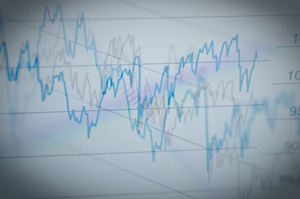What Economic Theory Says about Quantitative Easing

This is the second post in a three-part series on the use of quantitative easing as a monetary policy tool over the past decade.
Yesterday’s post discussed central banks’ use of quantitative easing (QE) over the past decade. Today’s post discusses how QE is supposed to work, according to theory. How would QE affect financial market conditions and, in turn, inflation and aggregate economic activity?
Conventional Theory of QE
In an article in The Regional Economist, Stephen Williamson, a former vice president and economist at the St. Louis Fed, explained the three basic theories that central bankers typically used to justify QE.
Portfolio Balance or Segmented Markets Theory
The idea behind portfolio balance theory is that purchases of long-maturity assets will lead to a flatter yield curve. “That is, with short-term interest rates at zero, or close to it, declines in long-term interest rates will narrow the margin between long-term and short-term rates,” he wrote.
According to this theory, the fact that assets of different maturities are imperfect substitutes suggests that the relative supplies matter. “A lower supply of long-term assets and a higher supply of short-term assets imply that long-term interest rates fall and short-term interest rates rise,” he explained.
Preferred Habitat Theory
The preferred habitat theory suggests that financial market participants prefer certain asset maturities over others, Williamson noted. The example he gave is life insurance companies, which have a preference for long-maturity assets in order to hedge risk.
“This implies a type of asset market segmentation, making the mechanism by which QE might work similar to portfolio balance theory,” he said.
Signaling Theory
The signaling theory is based on the idea that committing to future monetary policy can affect economic outcomes in the present, Williamson said, adding that QE may be a way to commit.
“That is, the structure of the central bank’s current asset portfolio may bind future monetary policymakers to particular actions,” he explained.
Alternative Approach to QE Theory
Williamson noted that none of those three theories integrates financial intermediation into the analysis in a serious way.
He explained that central banks are financial intermediaries that transform assets in terms of maturity, liquidity, risk and rate of return, similar to private financial intermediaries. “Therefore, the ability of a central bank to affect economic outcomes in a good way depends on its having an advantage relative to the private sector in intermediating assets,” he wrote.
One way to view QE, he said, is as a transformation of long-maturity assets into short-maturity reserves. He added that, compared to how conventional monetary policy works, it is not clear what advantage the central bank might have in conducting such a transformation.
“Therefore, from financial intermediation theory, it is not clear that QE should have any effect and it might actually be detrimental to the efficiency of the financial system,” he said.
The final post in this series will examine two natural experiments to help shed light on whether QE works.
Follow the Series
- What Is Quantitative Easing, and How Has It Been Used?
- What Economic Theory Says about Quantitative Easing
- Does Quantitative Easing Work as Advertised?
Additional Resources
- Regional Economist: Quantitative Easing: How Well Does This Tool Work?
- On the Economy: What Does Neo-Fisherism Say about Unconventional Monetary Policy?
- On the Economy: How Might Increases in the Fed Funds Rate Impact Other Interest Rates?
Citation
ldquoWhat Economic Theory Says about Quantitative Easing,rdquo St. Louis Fed On the Economy, Nov. 28, 2017.
This blog offers commentary, analysis and data from our economists and experts. Views expressed are not necessarily those of the St. Louis Fed or Federal Reserve System.
Email Us
All other blog-related questions

